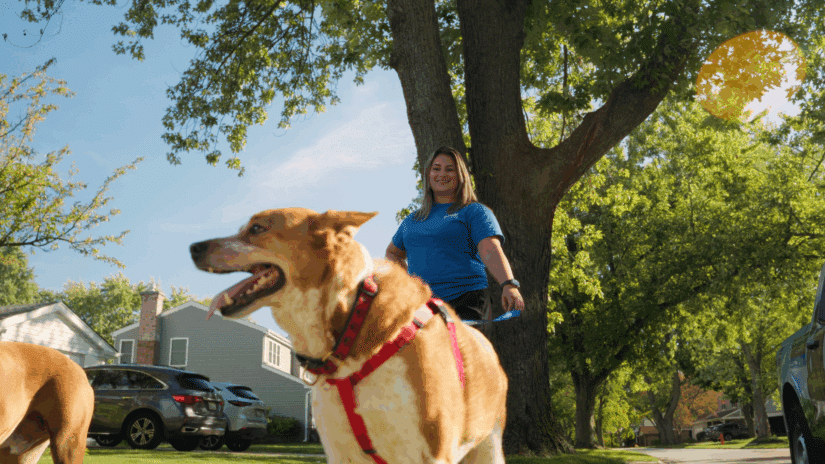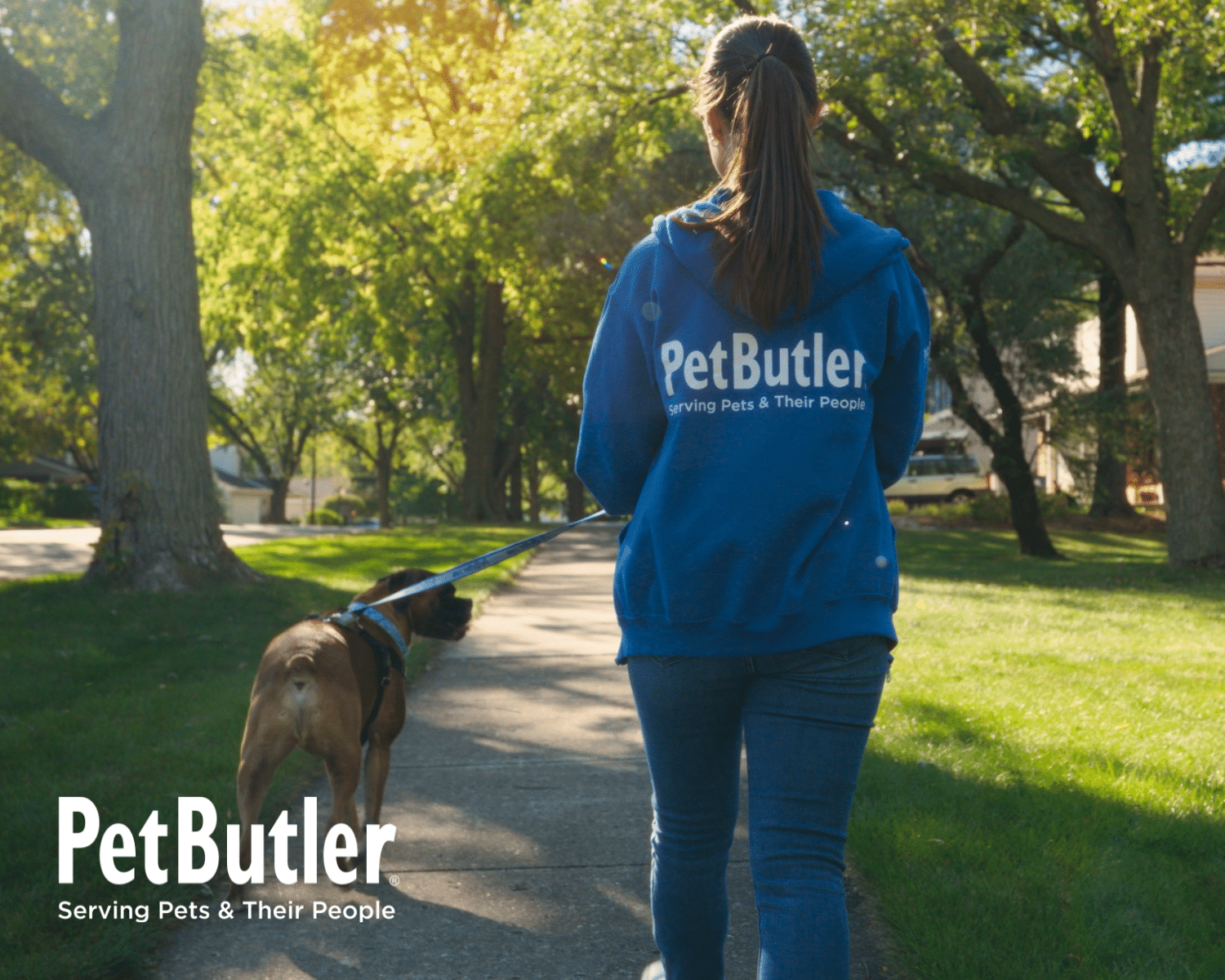Walking your dog isn’t just a daily chore — it’s one of the best ways to keep them healthy, happy, and connected to you. Walks provide physical exercise, mental stimulation, and emotional bonding time. But how do you know how often to walk your dog, how long those walks should be and how to recognize when your dog is trying to tell you something?
By paying attention to both recommended walking guidelines and your dog’s body language, you can meet their needs before stress or anxiety sets in. And if life gets busy, Pet Butler’s professional dog walking services ensure your pup still gets exercise and attention.
How Often Should You Walk Your Dog?
Most healthy dogs benefit from at least two walks a day, though some may need three or more depending on breed, age, and energy level. Walks don’t just provide potty breaks — they improve behavior, reduce boredom and support overall health.
If your schedule makes it hard to provide consistent walks, Pet Butler can help keep your dog on a healthy routine, their exercise needs are met even when you’re busy.
How Many Times a Day Should You Walk Your Dog?
Within the broader “how often,” most adult dogs do well with two to three structured walks daily, while puppies and seniors may need more frequent, shorter outings.
Think of walks in two categories:
- Potty breaks: Quick trips outside, especially after meals and naps.
- Exercise walks: Longer sessions where your dog moves, sniffs, and explores.
Signs Your Dog Needs More Walks
Dogs often give subtle cues before becoming restless or anxious:
- Pacing or circling inside
- Waiting by the door or bringing you their leash
- Barking, whining, or nudging you for attention
- Body language like ears pinned back or short, quick tail wags
By noticing these signals early, you can anticipate their needs instead of reacting after stress sets in. And with Pet Butler’s professional dog walkers available from 6 a.m. to 10 p.m., your pup can enjoy frequent, well-timed walks that keep them comfortable and cared for.

How Long Should a Dog Walk Be?
Dogs typically need 1–3 miles of walking daily, with some high-energy breeds requiring up to 5 miles. For most dogs, a walk of 20–30 minutes works well.
Reading Body Language on Walks
A walk should be enjoyable, not exhausting. Watch for these cues:
- Fatigue: slowing down, heavy panting, lying down mid-walk
- Overstimulation: pulling, barking, hackles raised
- Joy: relaxed body, wagging tail, occasional play bow (front legs down, rear up)
Experienced dog walkers, like those at Pet Butler, are trained to recognize these signs and adjust the pace or route to keep every walk safe and positive.
Balancing Distance and Mental Stimulation
Quality matters as much as quantity. A 20-minute walk where your dog can sniff and explore may be more fulfilling than a long brisk walk. Sniffing reduces stress and provides mental enrichment.
That’s why Pet Butler Pet Care Professionals focus on balancing exercise with enrichment, giving dogs the chance to sniff, explore, and interact — not just log miles.

Why Dog Walking Is About More Than Exercise
Walking supports:
- Physical health: joints, weight management, digestion
- Mental stimulation: sniffing and social interactions prevent boredom-related behaviors
- Emotional connection: strengthens the bond between you and your dog
Reading your dog’s body language during walks — from play bows to anxious yawns — ensures every walk is rewarding. If you’re away at work or traveling, Pet Butler’s professional walkers step in as trusted companions, keeping your dog happy and engaged.
Professional Support for Busy Pet Owners
Life gets busy, but your dog still needs consistent walks. That’s where Pet Butler comes in. Our professional dog walking services ensure your pup gets the exercise, attention, and care they deserve.
Plus, our scooping services keep your yard clean, so you can focus on enjoying quality time with your dog. Whether you need reliable walks, cleanups, or both, Pet Butler is here to keep tails wagging.
FAQs About Dog Walking and Body Language
How do I know if my dog is anxious on walks?
Look for tucked tails, yawning, lip licking, or avoiding eye contact.
Can too many walks be harmful?
Yes — especially for puppies with developing joints or senior dogs with arthritis. Choose multiple short walks rather than long, strenuous sessions.
Which is better? One long walk or several short ones?
Two to three shorter walks per day usually provide consistent exercise and bathroom breaks.
How do I know when to increase my dog’s walking routine?
If your dog remains restless, is still full of energy after walks, or gains weight, it may be time to increase frequency or distance.
Walking your dog is about balance: frequency, duration, distance — and paying attention to their signals. By noticing subtle cues before your dog becomes anxious, you can anticipate their needs and keep every walk enjoyable.
Whether your pup is high-energy or a gentle senior, the goal is the same: a happy, healthy dog who feels understood. And if you ever need help, Pet Butler’s dog walking services are just a call away.

